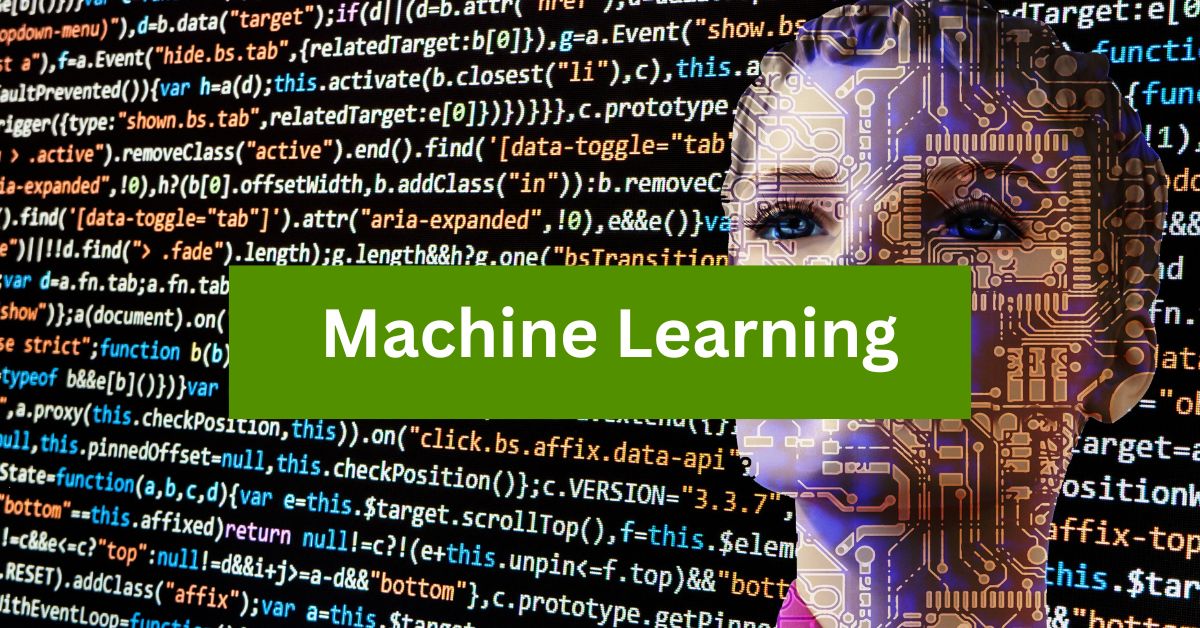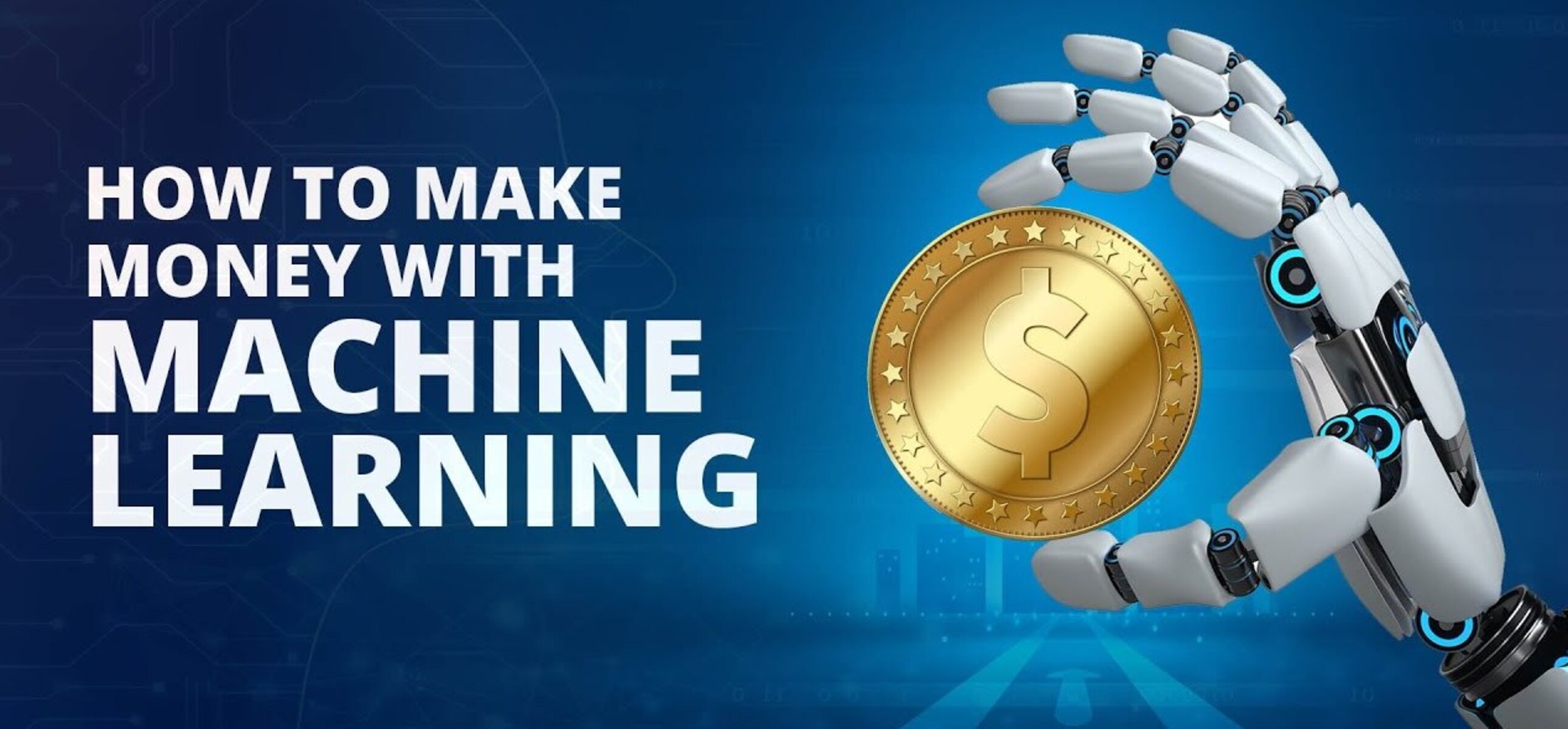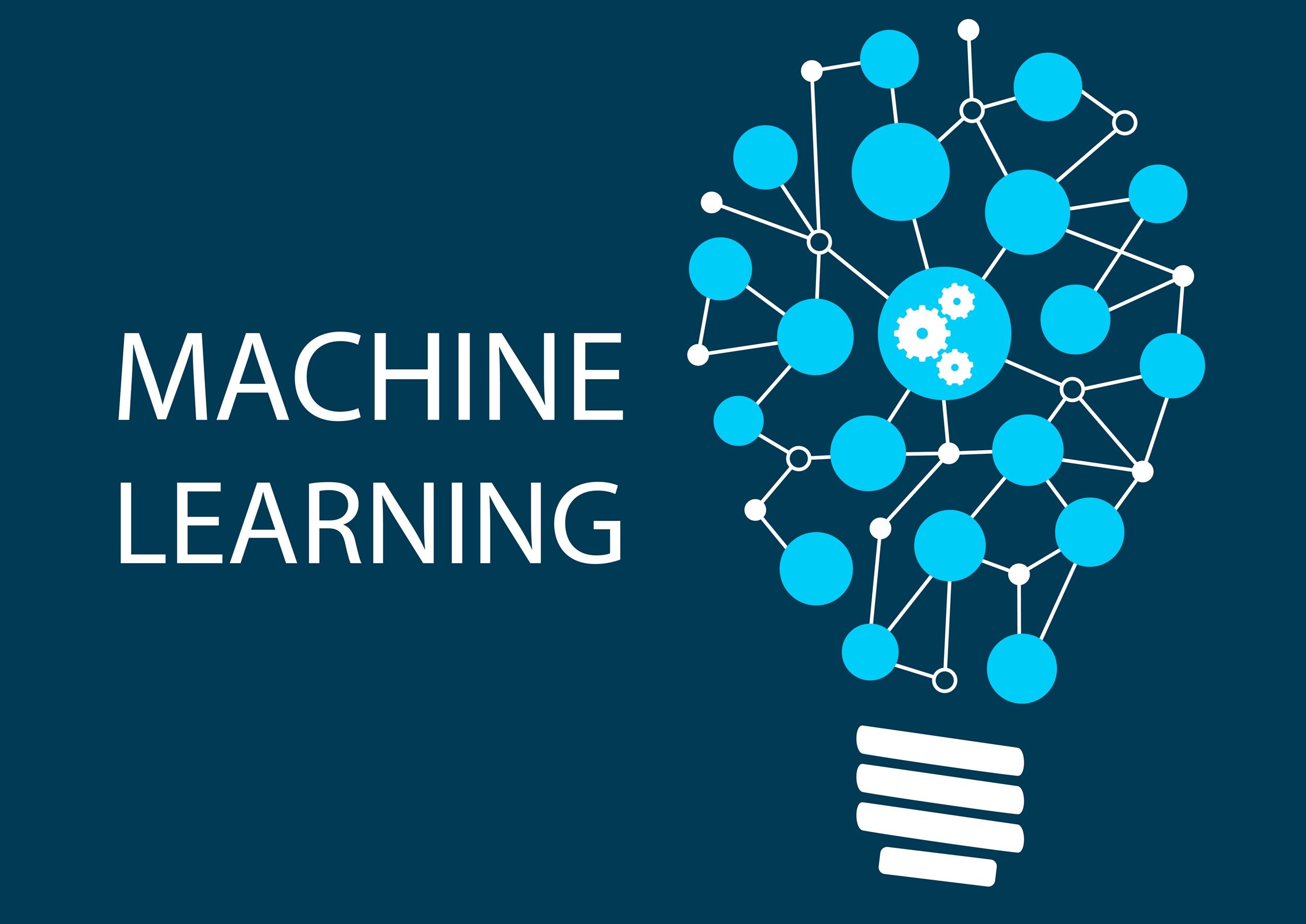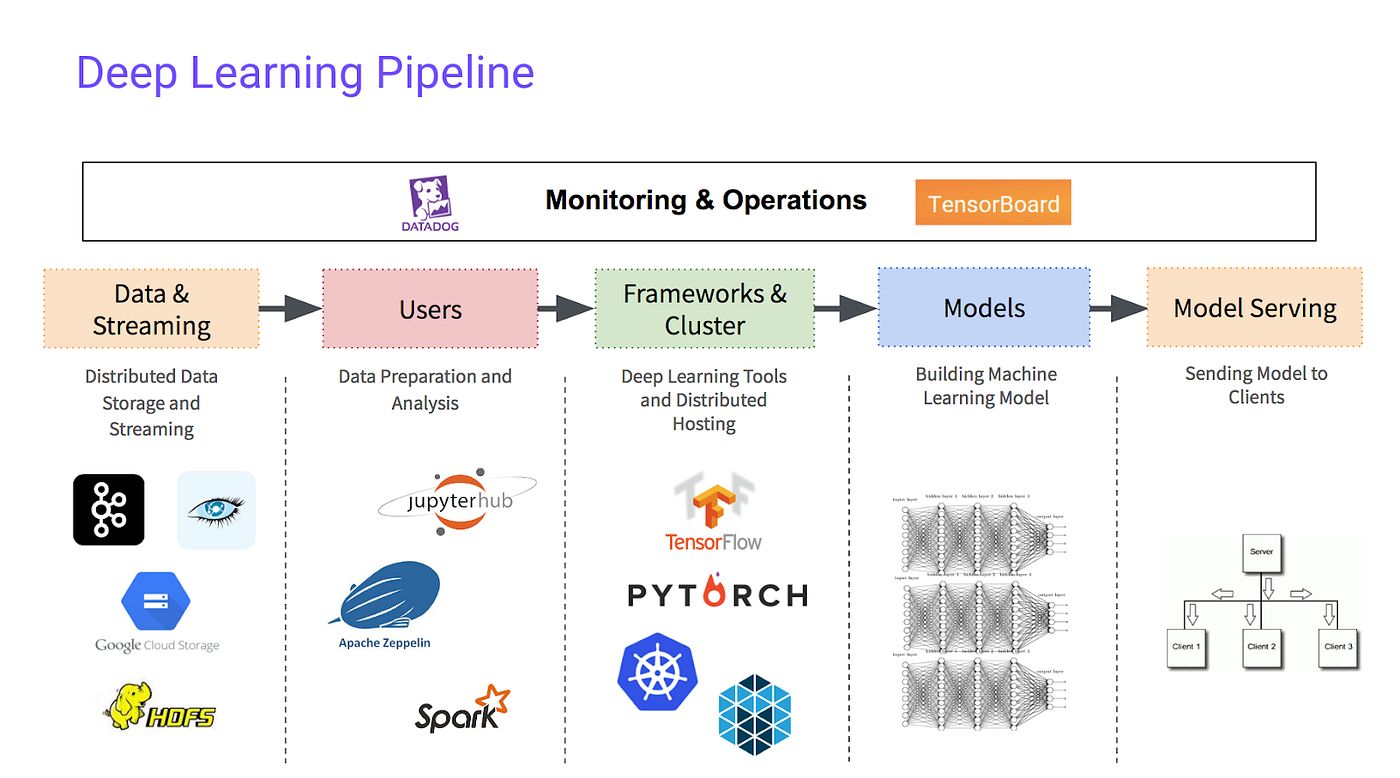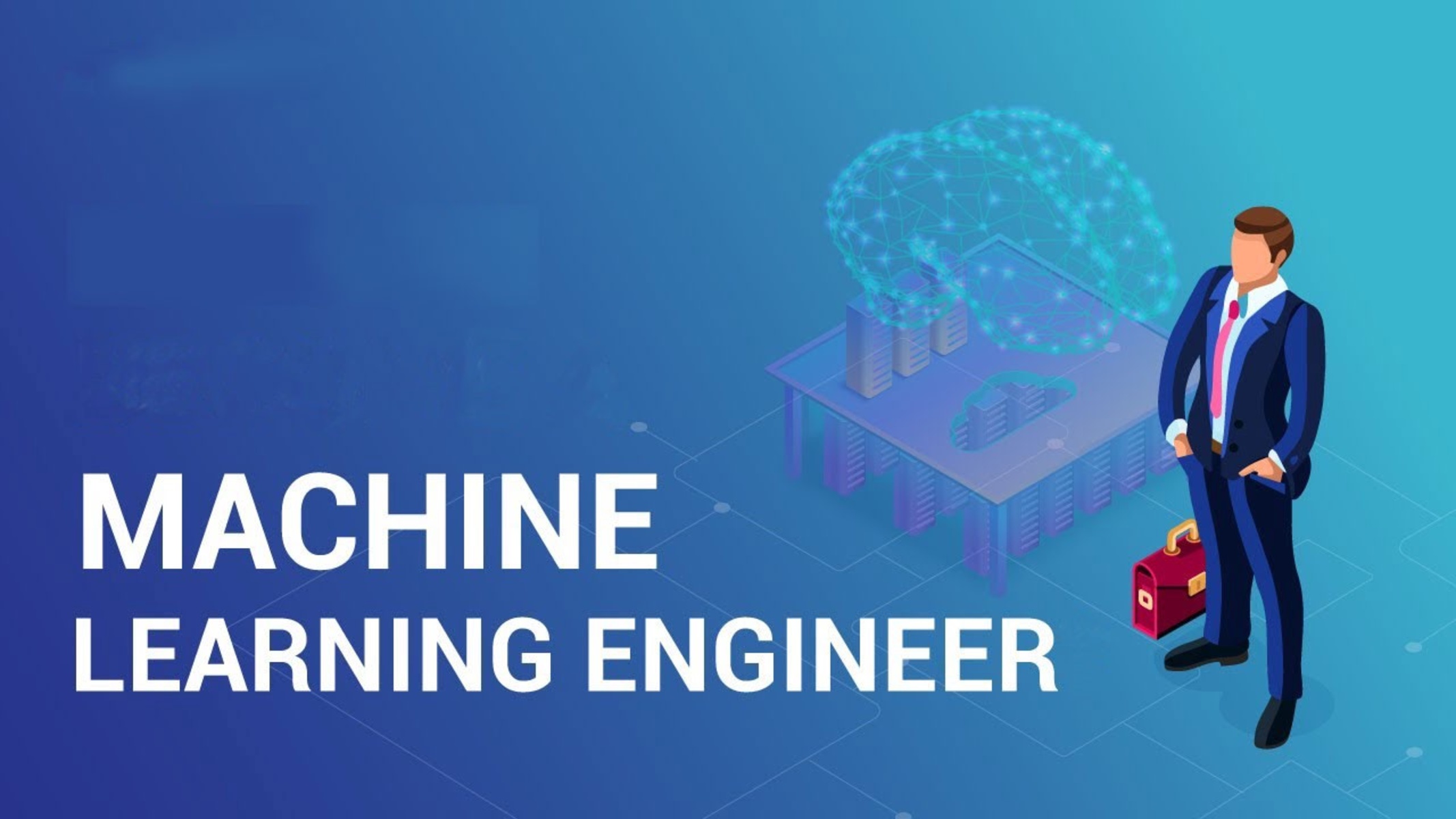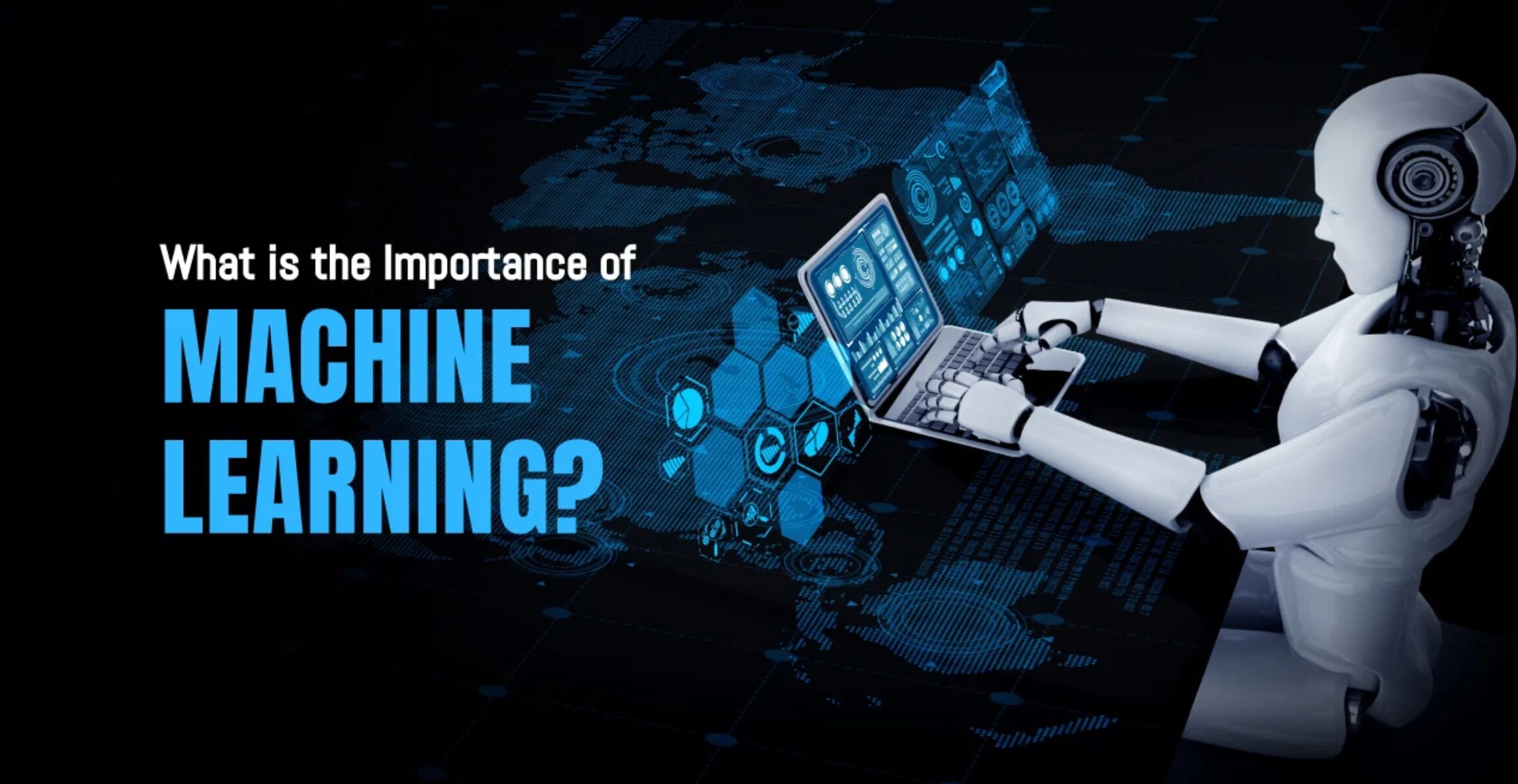Introduction
Welcome to the exciting world of machine learning! If you have ever been intrigued by the concept of computers learning from data and making intelligent decisions, then you have come to the right place. Machine learning is a rapidly evolving field that has the potential to revolutionize various industries, from healthcare to finance, entertainment to transportation.
In this article, we will embark on a journey to discover the key aspects of machine learning, how it works, and how you can start learning and applying it in your own projects. Whether you are a complete beginner or have some programming experience, this guide will provide you with a solid foundation to explore the fascinating world of machine learning.
Machine learning is a subset of artificial intelligence that focuses on enabling computers to learn and make predictions or decisions without being explicitly programmed. It involves training models on large datasets to recognize patterns and derive insights, which can then be used to make accurate predictions or take intelligent actions.
The applications of machine learning are vast and diverse. From self-driving cars and virtual assistants to recommendation systems and fraud detection, machine learning is playing a significant role in shaping the technological advancements of today and tomorrow.
Before diving into the technical aspects of machine learning, it’s important to have a basic understanding of the fundamental concepts and terminology used in this field. This will help you grasp the concepts more effectively as you progress through the learning journey.
In the following sections, we will cover the basics of machine learning, the programming language commonly used, the popular libraries and frameworks for implementing machine learning algorithms, and the different types of machine learning techniques.
So, let’s get started on this exciting adventure into the world of machine learning and discover how you can unleash the power of data to create intelligent systems that can learn, adapt, and make informed decisions.
Understanding the Basics
Before delving into the complexities of machine learning, it is crucial to grasp the basic concepts that form its foundation. These concepts will provide you with a solid understanding of how machine learning works and pave the way for further exploration.
At its core, machine learning revolves around the idea of training algorithms to recognize patterns and make predictions or decisions based on data. The three key components of machine learning are:
- Data: Machine learning relies heavily on data. The data can be labeled, where each instance is accompanied by the correct answer, or unlabeled, where the task is to uncover hidden patterns or structures. High-quality and well-curated data is essential for effective machine learning.
- Model: A model is a mathematical representation of a problem or a system. It takes in the input data, learns from it, and produces output predictions or decisions. Machine learning algorithms are designed to train these models by adjusting their parameters to minimize errors and improve performance.
- Training: The process of training a machine learning model involves exposing it to a labeled dataset, allowing it to learn from the patterns and relationships within the data. The model iteratively adjusts its parameters to optimize its performance and minimize errors.
Now that we have a basic understanding of the key components, let’s explore two fundamental types of machine learning: supervised learning and unsupervised learning.
Supervised Learning: In supervised learning, the training data consists of input features along with their corresponding labels or target values. The goal is to train a model that can learn the relationship between the input features and the target values, enabling it to make accurate predictions on new, unseen data. Examples of supervised learning algorithms include linear regression, decision trees, and support vector machines.
Unsupervised Learning: Unsupervised learning involves training models on unlabeled data, where the objective is to uncover hidden patterns or structures within the data. This type of learning is particularly useful for clustering similar data points together or identifying anomalies in a dataset. Common unsupervised learning algorithms include k-means clustering and principal component analysis.
These are just the tip of the iceberg when it comes to machine learning. There are also other specialized areas, such as deep learning and reinforcement learning, that offer advanced techniques for handling complex tasks and training models on massive amounts of data.
In the next section, we will explore the programming language commonly used in machine learning and why it is an essential skill to have.
Getting Familiar with Python
Python is the go-to programming language for many machine learning practitioners and enthusiasts. Its simplicity, readability, and large ecosystem of libraries make it an ideal choice for implementing machine learning algorithms. If you are new to Python, don’t worry – it is relatively easy to learn and beginner-friendly.
Python provides a clear and concise syntax that allows you to focus on the logic and implementation of your code. Its simplicity makes it easier to understand and debug, especially when dealing with complex machine learning problems. Additionally, Python has a vast community of developers who contribute to its libraries and frameworks, providing an extensive resource for learning and troubleshooting.
There are several key libraries in Python that are widely used in machine learning, such as:
- NumPy: NumPy provides support for large, multi-dimensional arrays and matrices, along with a collection of mathematical functions. It is the foundation for many other libraries in the Python data science ecosystem.
- Pandas: Pandas offers data manipulation and analysis tools. It provides data structures like DataFrames for efficient data handling and exploration.
- Matplotlib and Seaborn: Matplotlib and Seaborn are Python libraries for data visualization. They allow you to create informative plots, charts, and graphs to better understand and communicate your data.
- Scikit-learn: Scikit-learn is a powerful and widely-used machine learning library in Python. It provides a comprehensive set of tools for various tasks, such as regression, classification, clustering, and model evaluation.
- Keras and TensorFlow: Keras and TensorFlow are popular libraries for building deep learning models. They offer high-level abstractions and a flexible interface for designing and training neural networks.
Getting started with Python for machine learning is as easy as installing Python and the required libraries on your machine. There are numerous online resources, tutorials, and courses available to help you learn Python, both for general programming and specifically for machine learning.
Once you are familiar with Python, you can start exploring the different machine learning libraries and frameworks to implement various algorithms. Remember, practice is key. Working on real-world projects and experimenting with different datasets will enhance your understanding and proficiency in Python for machine learning.
In the next section, we will dive into the popular libraries and frameworks available for implementing machine learning algorithms.
Exploring Machine Learning Libraries
When it comes to implementing machine learning algorithms, there are numerous powerful libraries and frameworks available that can significantly simplify the process. These libraries provide ready-to-use implementations of various machine learning algorithms, saving you time and effort. Let’s explore some of the popular libraries used in machine learning.
Scikit-learn: Scikit-learn is a versatile and widely-used library in Python for machine learning tasks. It offers a comprehensive set of tools for classification, regression, clustering, and model evaluation. Scikit-learn provides an easy-to-use API and supports various algorithms, including support vector machines, decision trees, and random forests.
TensorFlow: Developed by Google, TensorFlow is an open-source library for numerical computation and machine learning. It is particularly popular for its support of deep learning models and offers a flexible architecture for building neural networks. TensorFlow provides an intuitive API for designing and training complex models along with excellent support for distributed computing.
Keras: Keras is a high-level neural network library that runs on top of TensorFlow. It provides a user-friendly API for designing and training deep learning models. Keras simplifies the process of building and experimenting with neural networks, making it a popular choice for beginners and experts alike.
PyTorch: PyTorch is an open-source library developed by Facebook’s research team. It is widely used for deep learning tasks and offers a dynamic computational graph, which allows for flexible model architecture and easier debugging. PyTorch provides excellent support for GPU acceleration, enabling faster model training and inference.
XGBoost: XGBoost is an efficient and scalable machine learning library for gradient boosting. It is known for its speed and performance in handling large datasets with high-dimensional features. XGBoost is often used in competitions and has gained popularity for its ability to achieve state-of-the-art results in various machine learning tasks.
These are just a few examples of the many powerful machine learning libraries available. Depending on your specific needs and requirements, you may explore other libraries such as Theano, Caffe, or LightGBM. It is essential to understand the strengths and weaknesses of each library and choose the one that best suits the problem you are trying to solve.
As you progress in your machine learning journey, you will likely find yourself exploring multiple libraries and leveraging their unique capabilities for different tasks. Familiarizing yourself with these libraries and their documentation will enhance your ability to implement and experiment with various machine learning algorithms.
In the next sections, we will delve into the different types of machine learning techniques, starting with supervised learning.
Supervised Learning
Supervised learning is a type of machine learning where the training data consists of input features along with their corresponding labels or target values. The goal of supervised learning is to train a model that can learn the underlying relationship between the input features and the target values, enabling it to make accurate predictions on new, unseen data.
In supervised learning, the training process involves exposing the model to a labeled dataset and iteratively adjusting its parameters to minimize the difference between the predicted outputs and the true labels. This process is done through various algorithms, each with its own strengths and weaknesses.
Here are a few popular supervised learning algorithms:
- Linear Regression: Linear regression is a regression algorithm used for predicting continuous numeric values. It assumes a linear relationship between the input features and the target value and estimates the coefficients to fit a line that best represents the data.
- Logistic Regression: Logistic regression is a classification algorithm used to predict binary or categorical outcomes. It estimates the probability of an instance belonging to a certain class based on the input features.
- Decision Trees: Decision trees are versatile algorithms that can be used for both regression and classification. They create a tree-like model of decisions and their possible consequences based on the input features.
- Support Vector Machines (SVM): SVM is a powerful algorithm used for both regression and classification tasks. It identifies the optimal hyperplane that separates the different classes with the largest margin.
- Random Forests: Random forests are ensemble learning algorithms that combine multiple decision trees to make predictions. They offer better generalization and robustness by averaging the predictions of individual trees.
- Neural Networks: Neural networks are highly flexible models inspired by the structure of the human brain. They consist of interconnected layers of nodes with learnable weights, allowing them to capture complex patterns and relationships within the data.
Supervised learning is widely used in various real-world applications, such as image and speech recognition, sentiment analysis, and fraud detection. It provides a reliable framework for making predictions and decisions based on the available data and can be further enhanced by techniques like feature engineering and model optimization.
As you explore supervised learning techniques, it is crucial to understand the potential challenges and considerations associated with choosing the appropriate algorithm, handling imbalanced classes, and evaluating the performance of the trained model.
In the next section, we will delve into unsupervised learning, another crucial branch of machine learning.
Unsupervised Learning
Unsupervised learning is a branch of machine learning that involves training models on unlabeled data. Unlike supervised learning, where the training data has predefined labels or target values, unsupervised learning aims to uncover hidden patterns, structures, or relationships within the data.
Clustering is one of the key techniques used in unsupervised learning. This involves organizing similar data points into distinct groups or clusters based on their feature similarities. The goal is to identify inherent patterns or structures within the data without any prior knowledge of the labels.
Here are a few common unsupervised learning algorithms:
- K-means Clustering: K-means clustering is a popular algorithm that divides the dataset into K clusters, where K is a predefined parameter. It iteratively assigns data points to the nearest cluster centroid and updates the centroids based on the assigned points, aiming to minimize the within-cluster sum of squares.
- Hierarchical Clustering: Hierarchical clustering creates a hierarchical structure of clusters by either performing a bottom-up (agglomerative) or top-down (divisive) approach. It builds a tree-like structure of clusters, allowing the exploration of clusters at different levels of granularity.
- Principal Component Analysis (PCA): PCA is a dimensionality reduction technique commonly used in unsupervised learning. It transforms high-dimensional data into a lower-dimensional space, while preserving most of the data’s original variation. PCA identifies the directions in the data that contain the most information and projects the data onto these principal components.
- Anomaly Detection: Anomaly detection algorithms are used to identify unusual or rare instances in a dataset that deviate significantly from the norm. These anomalies could be indicative of potential fraud, errors, or unexpected behavior.
Unsupervised learning has various real-world applications, including customer segmentation, data exploration, anomaly detection, and recommendation systems. It allows us to gain insights and discover underlying structures in the data without relying on labeled examples or prior knowledge.
It’s important to note that unsupervised learning can also be used as a preprocessing step for supervised learning tasks. By performing dimensionality reduction or clustering, unsupervised learning can help in reducing noise, identifying important features, or creating synthetic labels for subsequent supervised learning algorithms.
When working with unsupervised learning algorithms, it’s essential to evaluate the quality of the learned structures and patterns. This can be challenging, as there are no ground truth labels to compare against. However, there are various metrics and techniques, such as silhouette coefficient and elbow method, that can provide insights into the quality of clustering and dimensionality reduction results.
In the next section, we will dive into deep learning, an area of machine learning that has gained significant attention in recent years.
Deep Learning
Deep learning is a subfield of machine learning that focuses on training artificial neural networks with multiple layers, also known as deep neural networks. It is inspired by the structure and functionality of the human brain and has gained significant attention in recent years due to its ability to learn complex patterns and representations from large amounts of data.
Deep neural networks consist of interconnected layers of nodes, known as neurons, which process and transform input data to produce output predictions. Each layer performs a specific computation, and information flows through the network in a hierarchical manner, with each layer building upon the representations learned by the previous layers.
Deep learning has been instrumental in achieving groundbreaking results in various domains, including computer vision, natural language processing, and speech recognition. Some prominent applications of deep learning include image classification, object detection, machine translation, and voice assistants.
One of the reasons deep learning has gained popularity is its ability to automatically learn and extract hierarchical representations from raw data. This alleviates the need for manual feature engineering, as deep neural networks can learn useful features at different levels of abstraction. This makes deep learning particularly powerful when dealing with complex, high-dimensional data.
There are several key deep learning architectures and algorithms that have revolutionized the field:
- Convolutional Neural Networks (CNNs): CNNs are widely used in computer vision tasks, such as image classification and object detection. They consist of convolutional layers that automatically learn spatial hierarchies of features from input images.
- Recurrent Neural Networks (RNNs): RNNs are suitable for sequential data analysis, such as natural language processing and speech recognition. They have connections that allow information to be carried across different time steps, making them effective for handling temporal dependencies.
- Long Short-Term Memory (LSTM): LSTMs are a type of RNN architecture designed to overcome the limitations of traditional RNNs in capturing long-term dependencies. LSTMs have specialized memory cells that can retain information over longer sequences.
- Generative Adversarial Networks (GANs): GANs consist of two neural networks, a generator and a discriminator, which compete against each other in a game-like setup. GANs are commonly used to generate realistic images or data by training the generator to produce samples that can fool the discriminator.
Deep learning requires large amounts of labeled data and substantial computational resources for training complex models. However, with advancements in hardware and the availability of pre-trained models, it has become more accessible to researchers and practitioners. Many popular deep learning frameworks, such as TensorFlow, Keras, and PyTorch, provide high-level abstractions and tools for building and training deep neural networks.
As deep learning is a rapidly evolving field, staying updated with the latest research and techniques is essential. By continually exploring new architectures, algorithms, and best practices, you can leverage the power of deep learning to solve complex problems and push the boundaries of artificial intelligence.
In the next section, we will uncover the concepts and applications of reinforcement learning.
Reinforcement Learning
Reinforcement learning is a type of machine learning that focuses on learning through interaction with an environment. Unlike supervised and unsupervised learning, reinforcement learning does not rely on labeled or unlabeled data. Instead, it learns by receiving feedback in the form of rewards or penalties based on its actions and uses this information to make sequential decisions in order to maximize a cumulative reward.
In reinforcement learning, an agent learns through a trial-and-error process, where it explores the environment, takes actions, and receives feedback. The goal is to find an optimal policy, which guides the agent’s actions in different states, leading to the highest long-term reward.
The key components in reinforcement learning are:
- Agent: The agent is the learner or decision-maker that interacts with the environment. It takes actions based on the state it perceives and tries to maximize the cumulative reward.
- Environment: The environment is the external world with which the agent interacts. It provides feedback to the agent in the form of rewards or penalties based on the agent’s actions.
- State: The state represents the condition of the environment at a specific time. It is the basis for the agent to make decisions about which action to take.
- Action: Actions are the choices made by the agent, which influence the state transition and the rewards received from the environment.
- Reward: The reward reflects the desirability of the state-action pair. Positive rewards encourage the agent to repeat similar actions, while negative rewards discourage undesirable actions.
Reinforcement learning has been successfully applied in various domains, including robotics, game playing, and autonomous systems. Some notable examples include training computer algorithms to play complex games like Go and chess at a superhuman level and teaching robots to perform intricate tasks with precision, such as grasping objects or walking.
Q-learning and deep Q-networks (DQNs) are popular algorithms used in reinforcement learning. Q-learning uses a value function to estimate the expected cumulative rewards for different state-action pairs. DQNs utilize deep neural networks to approximate the Q-values, allowing for more complex and high-dimensional state representations.
Reinforcement learning presents unique challenges, such as the exploration-exploitation dilemma, the credit assignment problem, and the trade-off between short-term rewards and long-term objectives. Balancing exploration to discover new rewarding actions and exploitation of the current knowledge is crucial for reinforcement learning agents.
By applying reinforcement learning, agents can learn optimal strategies and policies through trial-and-error experiences. With continuous learning and improvement, reinforcement learning can lead to the development of autonomous systems capable of making intelligent decisions in dynamic and uncertain environments.
In the next section, we will discuss the importance of choosing and preparing the right data for machine learning tasks.
Choosing and Preparing Data
Choosing the right data and preparing it properly is crucial for successful machine learning. High-quality, relevant, and representative data plays a significant role in training accurate and robust models. In this section, we will explore the key considerations for selecting and preparing data for machine learning tasks.
Data Selection: When selecting data, it is important to focus on the problem at hand and consider the specific requirements of your machine learning task. You need to ensure that the data represents the target domain and covers a wide range of scenarios and variations. It is also crucial to address any biases in the data that may affect model performance or lead to discriminatory outcomes.
Data Quality: Data quality is essential to the success of machine learning. It is important to thoroughly clean and preprocess the data, removing any outliers, missing values, or irrelevant features. Take the time to understand the data distribution, examine for anomalies, and ensure consistency across different data sources or collection methods. Data quality directly impacts the performance and generalizability of the trained models.
Data Preprocessing: Preprocessing the data involves transforming it into a suitable format for machine learning algorithms. This typically includes feature scaling, feature encoding, handling missing values, and handling categorical variables. Feature engineering, the process of creating new features from existing data, can also improve the performance of machine learning models by providing them with more meaningful inputs.
Data Splitting: It is important to split the available data into training, validation, and testing sets. The training set is used to train the model, the validation set helps fine-tune hyperparameters and monitor model performance, and the testing set serves as an independent evaluation of the final model’s performance. This helps in assessing how well the model generalizes to new, unseen data and avoids overfitting.
Data Augmentation: In cases where the available data is limited, data augmentation techniques can be used to artificially expand the dataset. This involves applying transformations, such as rotation, scaling, or cropping, to generate additional training samples. Data augmentation can help mitigate issues related to data scarcity and improve the robustness and generalization ability of the models.
Data Ethics and Privacy: When working with data, it is essential to be mindful of ethical considerations and privacy regulations. Ensure that the data collection process adheres to legal and ethical standards, and take steps to anonymize or secure personally identifiable information. Transparency and accountability should be maintained throughout the machine learning pipeline to ensure fair and responsible use of data.
Choosing and preparing data is a critical step in the machine learning process. By carefully curating, cleaning, and transforming the data, you can improve the accuracy and performance of your models. Remember to continuously evaluate and iterate on the data selection and preparation process, as it directly impacts the quality and reliability of the insights derived from machine learning.
In the next section, we will explore the model training and evaluation process, which is crucial for building effective machine learning models.
Model Training and Evaluation
Model training and evaluation are fundamental steps in building effective machine learning models. Training involves optimizing the model’s parameters and learning from the available data, while evaluation assesses the model’s performance and generalization ability. In this section, we will explore these key aspects of model development.
Model Training: During the training phase, the model is exposed to the labeled training data, and its parameters are adjusted to minimize the difference between predicted and actual values. This process involves an optimization algorithm, such as gradient descent, that iteratively updates the model’s parameters based on the loss or error between the predicted and actual values. The goal is to find the optimal set of parameters that best fit the training data.
Hyperparameter Tuning: Hyperparameters are parameters that are not learned from the data but are set by the model developer before training. These include parameters such as learning rate, regularization strength, and the number of hidden layers in a neural network. Finding the optimal combination of hyperparameters is crucial for achieving the best model performance. This is typically done through techniques such as grid search, random search, or more advanced methods like Bayesian optimization.
Model Evaluation: Once the model is trained, it is essential to evaluate its performance on unseen data. This is done using a separate validation or test dataset that was not used during the training process. Common metrics for evaluating model performance include accuracy, precision, recall, F1 score, and area under the receiver operating characteristic (ROC) curve, among others. The choice of evaluation metric depends on the specific task and the trade-offs between different evaluation criteria.
Overfitting and Underfitting: Overfitting occurs when a model performs well on the training data but fails to generalize to new, unseen data. This can happen when the model is too complex or when there is not enough data to learn from. Underfitting, on the other hand, occurs when the model is too simple to capture the underlying patterns in the data. Balancing between overfitting and underfitting is essential to ensure the model’s ability to generalize well.
Validation Techniques: To estimate the model’s performance on unseen data and fine-tune hyperparameters, various validation techniques can be employed. These include k-fold cross-validation, where the data is divided into k subsets for training and validation, and hold-out validation, where a portion of the data is randomly held out as a validation set. These techniques help in assessing the model’s stability and preventing bias in the evaluation process.
Model Selection: After evaluating and comparing the performance of different models, it is important to select the one that best suits the problem at hand. Factors to consider include the metrics, computational resources, interpretability, and the model’s ability to handle real-world scenarios. By carefully analyzing the evaluation results, you can choose the model that strikes the right balance between performance and practicality.
Model training and evaluation are iterative processes that often require experimentation, fine-tuning, and optimization. It is crucial to continuously monitor and refine the models based on the evaluation results and feedback from real-world applications.
In the next section, we will uncover the deployment and productionization considerations for machine learning models.
Deployment and Productionization
Once a machine learning model has been trained and evaluated, the next step is to deploy it into a production environment where it can make predictions or decisions on new, real-time data. The deployment and productionization phase involves several considerations to ensure the model’s performance, scalability, and reliability.
Choosing the Right Framework or Infrastructure: Selecting the appropriate framework or infrastructure for model deployment is critical. Depending on the specific requirements of your application, you may choose to deploy the model on-premises, in the cloud, or on edge devices. Cloud-based platforms such as AWS, Azure, or Google Cloud provide scalable and flexible options for deploying and managing machine learning models.
Building Robust Data Pipelines: Data pipelines are essential for preprocessing and feeding new data into the deployed model. These pipelines should handle data collection, cleaning, feature extraction, and transformation in a reliable and efficient manner. Implementing proper data quality checks and monitoring techniques is crucial to ensure consistent and high-quality input for the model.
Ensuring Scalability and Performance: Once in production, the model should be able to handle a high volume of incoming requests efficiently and deliver predictions or decisions in a timely manner. This may involve optimizing the system architecture, fine-tuning computational resources, and implementing caching or load-balancing techniques to ensure scalability and responsiveness.
Monitoring and Maintenance: Continuous monitoring is essential to track the model’s performance, detect any degradation, and identify potential issues or anomalies. Monitoring techniques can include analyzing model accuracy and performance metrics, logging system behavior, and implementing alerts or dashboards for real-time monitoring. Regular model maintenance and updates, such as retraining or fine-tuning, may be required to ensure the model’s effectiveness over time.
Achieving Robustness and Security: Deployed models should be robust and resilient to diverse input conditions, such as handling missing or noisy data, handling edge cases, and gracefully handling unexpected interruptions or failures. Additionally, security measures should be implemented to protect sensitive data and prevent unauthorized access or adversarial attacks.
Versioning and Rollbacks: It is crucial to establish a versioning system to manage and track different iterations or versions of the deployed model. This allows for easy rollback to previous versions in case of issues or the need to revert changes. Versioning also enables reproducibility and fosters collaboration among teams working on the model.
Documentation and Collaboration: Proper documentation is vital for maintaining a clear record of the deployed model’s specifications, dependencies, and configuration. This documentation facilitates collaboration between team members and future maintenance or updates. Sharing knowledge and best practices within the organization promotes efficient model deployment and facilitates knowledge transfer.
Deploying and productionizing a machine learning model requires careful planning, consideration of infrastructure and architectural choices, and ongoing monitoring and maintenance. By addressing these aspects, you can ensure the successful deployment of the model and its integration within real-world applications.
In the next section, we will discuss continuous learning and improvement strategies to enhance the performance and capabilities of machine learning models.
Continuous Learning and Improvement
Machine learning models are not static entities. Instead, they can benefit from continuous learning and improvement to adapt to changing environments, incorporate new data, and enhance their performance over time. Continuous learning involves a feedback loop of gathering new data, retraining or updating the model, and monitoring its performance. This section explores strategies for continuous learning and improvement.
Collecting New Data: As new data becomes available, collecting and incorporating it into the model’s training process allows for the model to adapt to new patterns or trends. This can involve the addition of new labeled data for supervised learning tasks or the continuous collection of unlabeled data for unsupervised or reinforcement learning scenarios.
Retraining and Updating the Model: Regularly retraining the model on new and relevant data helps capture evolving patterns and maintain its effectiveness. Depending on the magnitude of new data or changes in the environment, retraining might occur periodically, triggered by specific events, or on an ongoing basis. Techniques like online learning, transfer learning, or incremental learning can be used to update the model efficiently.
Incorporating User Feedback: User feedback can be a valuable source of information for model improvement. Gathering feedback on model predictions, user interactions, or user preferences can provide insights into the model’s performance and help identify areas for improvement. This feedback can influence the training process or be used to create explicit feedback loops to refine or personalize the model’s behavior.
Monitoring Model Performance: Continuous monitoring of the deployed model allows for the detection of performance degradation, concept drift, or anomalies. Monitoring can include tracking metrics, analyzing user interactions, and conducting periodic evaluations. This helps identify instances where the model might need retraining or where other actions, such as data augmentation or reconfiguration, are necessary to maintain optimal performance.
A/B Testing and Experimentation: A/B testing involves comparing the performance of multiple models or model configurations to select the most effective one. This technique allows for the evaluation of different approaches, incorporating control groups, and measuring incremental improvements. Through experimentation, organizations can explore new algorithms, feature engineering techniques, or architectures to enhance their models.
Collaboration and Knowledge Sharing: Encouraging collaboration within teams and sharing knowledge across the organization is essential for continuous learning and improvement. Regularly communicating insights, best practices, and challenges can foster a culture of learning and innovation. Collaboration can also leverage the diverse expertise within the organization, leading to more effective solutions and efficient model improvement.
Evaluating Model Impact: It is important to periodically assess the real-world impact of the model’s predictions or decisions. Understanding the model’s influence on business or user outcomes allows for the identification of areas that require improvement, as well as the alignment of the model’s objectives with the organization’s goals.
By embracing the principles of continuous learning and improvement, machine learning models can adapt, evolve, and deliver better performance over time. The iterative process of gathering new data, incorporating feedback, and refining the model not only leads to continuous enhancement but also ensures that the deployed models stay relevant, effective, and provide value to the intended users or stakeholders.
In the next section, we will conclude our journey into machine learning and summarize the key insights gained throughout this article.
Conclusion
Machine learning provides a powerful framework for computers to learn from data and make intelligent decisions. In this article, we embarked on a journey to explore the fundamentals of machine learning, from understanding the basics to delving into supervised and unsupervised learning, deep learning, reinforcement learning, data selection and preparation, model training and evaluation, deployment and productionization, and continuous learning and improvement.
We began by understanding the key components of machine learning: data, models, and training. We discovered the distinct techniques used in supervised and unsupervised learning and explored how deep learning empowers the creation of complex models capable of capturing intricate patterns. We also learned about reinforcement learning, where agents learn from their interactions with the environment to maximize rewards.
Choosing the right data and preparing it properly is crucial for effective machine learning. We explored the significance of data quality, preprocessing, splitting, and augmentation in facilitating accurate model training. Model training and evaluation were discussed in detail, including topics such as hyperparameter tuning, overfitting and underfitting, and various validation techniques.
We then moved on to the deployment and productionization stage, highlighting the importance of infrastructure, data pipelines, scalability, security, versioning, and documentation. Finally, we emphasized the significance of continuous learning and improvement, involving data collection, model updates, user feedback, monitoring, experimentation, collaboration, and evaluation of real-world impact.
Machine learning offers endless possibilities for innovation and problem-solving. As technology advances and data availability increases, the potential for machine learning applications continues to expand. By mastering the concepts and techniques covered in this article and staying up to date with the latest advancements, you can leverage machine learning to make a positive impact in various domains.
Remember, machine learning is a journey of exploration and continuous learning. Embrace the iterative nature of the process, experiment with different techniques, and enjoy the excitement of uncovering new insights from data. With dedication, creativity, and a solid understanding of the fundamentals, you are on your way to becoming a skilled practitioner in the field of machine learning.







